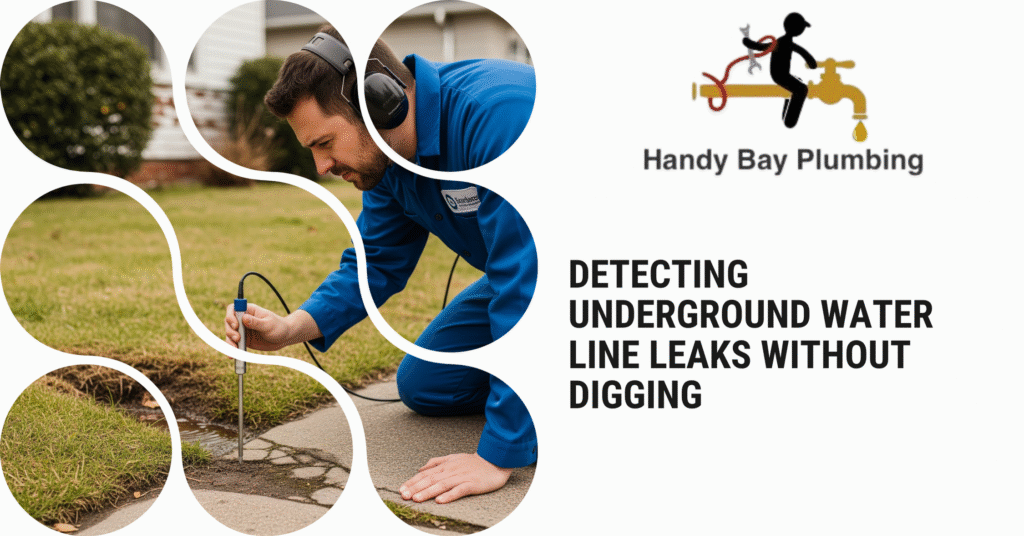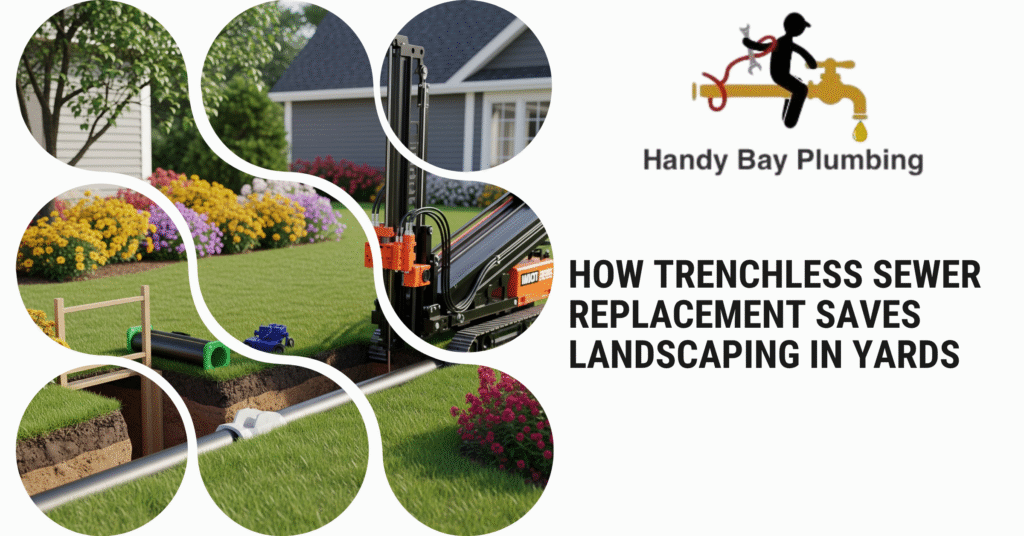Introduction
A failing sewer line used to mean torn-up lawns, destroyed flower beds, and weeks of construction mess. But thanks to trenchless sewer replacement, homeowners today can fix underground pipes without sacrificing the beauty of their yards. This modern technique keeps your landscape intact while solving serious plumbing problems efficiently and cost-effectively.
What Is Trenchless Sewer Replacement?
Trenchless sewer replacement uses advanced technology to repair or replace pipes without extensive digging. Instead of excavating a long trench along the sewer line, small access points are created at each end. From there, specialized tools and techniques, like pipe bursting or pipe lining (CIPP, cured-in-place pipe), replace or reinforce the existing pipe underground.
How Traditional Sewer Replacement Damages Landscaping
Before trenchless methods, sewer replacement meant heavy machinery digging a trench from the house to the street, often 50 to 100 feet long and several feet wide.
This process can:
- Destroy lawns and topsoil
- Uproot trees and shrubs
- Crack or remove patios, walkways, and driveways
- Disrupt irrigation systems and outdoor lighting
- Require expensive replanting and repairs afterward
Result:
A sewer fix turns into a major landscaping project, costing thousands extra and months of recovery time.
Benefits of Trenchless Sewer Replacement for Your Yard
1. Minimal Digging
With trenchless methods, only two small pits, often just a few feet across, are needed. This keeps your grass, flower beds, and garden untouched.
Why it matters:
Less soil disruption preserves root systems, soil health, and landscaping design.
2. Preserves Hardscapes and Trees
Traditional digging often requires removing decks, patios, pavers, and mature trees in the pipe’s path. Trenchless methods navigate underneath or around these structures, saving them from demolition.
Bonus:
You keep your shade trees and the investment in hardscaping.

3. Faster Completion
Trenchless sewer replacement can often be finished in one to two days, compared to a week or more for open trench digging.
Benefit:
Your yard stays functional, and you avoid long-term mess, mud, and blocked driveways.
4. Lower Landscaping Repair Costs
Repairing a torn-up yard can cost thousands. By keeping the surface mostly intact, trenchless methods help homeowners avoid:
- New sod installation
- Replanting shrubs and flower beds
- Hardscape reconstruction
- Irrigation system repairs
5. Eco-Friendly Solution
Less soil disruption means fewer emissions from heavy machinery, reduced landfill waste, and healthier soil and root systems.
Why this matters:
Healthy soil keeps your garden thriving and supports local biodiversity.
Common Trenchless Methods That Protect Landscaping
Pipe Lining (CIPP)
A resin-coated liner is inserted and cured inside the old pipe, creating a durable new pipe without excavation.
- Best for pipes with cracks or minor damage
- Extends pipe lifespan by decades
Pipe Bursting
A new pipe is pulled through the old one, breaking it apart underground and replacing it in the same path.
- Ideal for completely collapsed pipes or major damage
- Requires only two small access points

Things to Consider Before Choosing Trenchless
- Soil conditions: Rocky soil or collapsed pipes may need specialized solutions.
- Pipe type and diameter: Some older materials may not be suitable for certain trenchless methods.
- Professional expertise: Choose experienced, licensed contractors with trenchless equipment.
Conclusion
Trenchless sewer replacement offers a modern, minimally invasive way to fix critical plumbing issues without sacrificing your landscaping. By preserving lawns, trees, patios, and gardens, this method saves homeowners time, money, and stress while protecting property value and curb appeal.
Before digging up your yard, ask your plumber about trenchless solutions. Your landscape and your wallet, will thank you. Contact us today!





